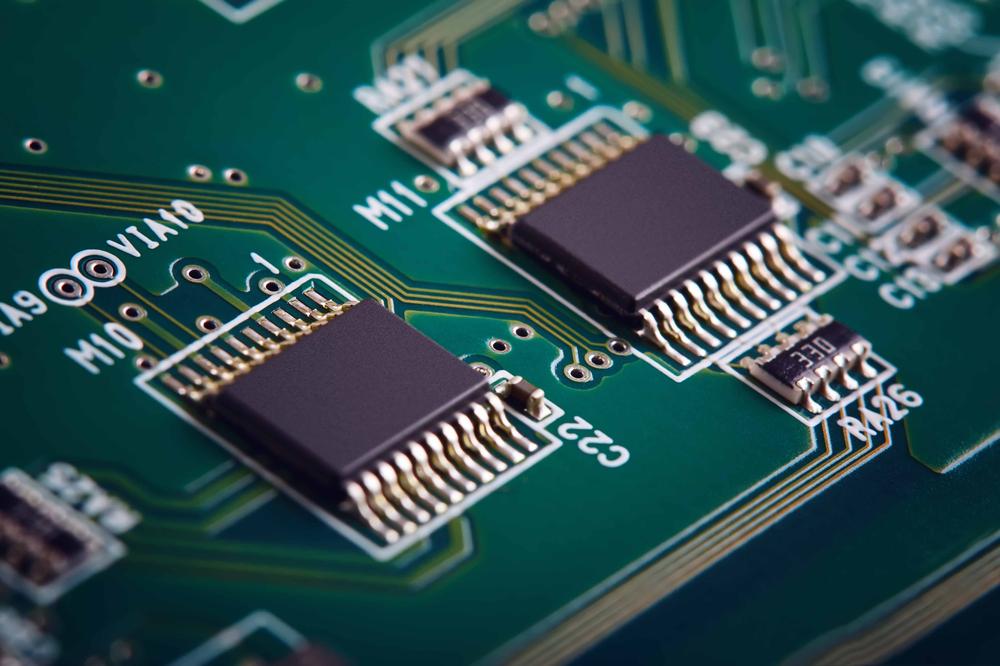
The B2B platform for the best purchasing descision. Identify and compare relevant B2B manufacturers, suppliers and retailers
Close
Filter
Result configuration
Continents
Select continent
Locations
Result types
Company type
Select company type
Industries
Select industry
Company status
Select company status preset
Number of employees
Min.
Max.
Founding year
Alliance Memory
Washington, United States
B
11-50 Employees
2006
Key takeaway
Alliance Memory specializes in manufacturing a range of semiconductor memory products, including SRAM, DRAM, and FLASH. They provide both legacy and new technology memory solutions, ensuring a robust inventory to meet customer demands.
Reference
Core business
Alliance Memory - Manufacturer of Legacy Memory SRAM, DRAM, and Flash ICs
Manufacturer of Legacy Memory SRAM, DRAM, and Flash ICs
eMemory Technology
Hsinchu, Taiwan
251-500 Employees
-
Key takeaway
The company provides advanced platforms for Logic Non-Volatile Memory (NVM) silicon IPs, highlighting their expertise in semiconductor memory solutions. Their offerings include a variety of customizable logic NVM options, emphasizing the importance of hardware security for data protection throughout the lifecycle of the chip.
Reference
Product
eMemory Technology Inc
Micron Technology India
Hyderabad, India
D
1001-5000 Employees
2019
Key takeaway
Micron Technology is a world leader in innovative memory solutions, specializing in semiconductor memory that enhances how information is used globally. Their commitment to continuous investment and innovation has positioned them at the forefront of the industry, particularly in areas like data center storage.
Reference
Core business
Micron Technology | Global Leaders in Semiconductors
Micron, Micron Technology, Memory and Storage, SSD, DRAM, NAND, Data Center, Automotive, Mobile, Intelligent Edge, Micron Gives, Micron Career, Micron Technology Leadership
Looking for more accurate results?
Find the right companies for free by entering your custom query!
25M+ companies
250M+ products
Free to use

DIP INTERNATIONAL
United Kingdom
A
11-50 Employees
1989
Key takeaway
MemoTech is a specialized distributor of memory components, including DRAM, SRAM, and Flash storage products, serving the manufacturing industries in the UK, Ireland, and continental Europe. They emphasize the importance of dedicated knowledge and support throughout the project lifecycle, particularly in the fast-evolving semiconductor memory sector.
Reference
Core business
Memory distributor of DRAM, SRAM, Flash, Flash Storage & Analog Products
Ferroelectric Memory Company
Dresden, Germany
A
11-50 Employees
2016
Key takeaway
The company highlights the growing demand for embedded nonvolatile memory solutions (eNVM) that support advancements in products like microcontrollers (MCUs), particularly in the context of IoT. They note that traditional eNVM options, such as eFlash, are no longer cost-effective, indicating a need for innovative memory solutions.
Reference
Core business
About – Ferroelectric Memory Company
Netlist
Irvine, United States
B
51-100 Employees
2000
Key takeaway
Netlist specializes in hybrid memory, integrating DRAM and NAND flash to create innovative memory solutions. The company has a strong track record of pioneering products in this field, including the industry's first Storage Class Memory product, HybriDIMM, which combines commodity DRAM and flash.
Reference
Product
Memory Module - Netlist Inc.
NEO Semiconductor
San Jose, United States
B
1-10 Employees
2012
Key takeaway
NEO Semiconductor specializes in 3D NAND flash memory technology and has developed over 60 products in various non-volatile memory types, making it a key player in the semiconductor memory sector. The company's innovative Floating Body Cell (FBC) technology enhances data storage efficiency, which is crucial for applications like 5G and AI.
Reference
Core business
About - Neo Semiconductor | X-Nand
Company NEO Semiconductor is a high-tech company focused on 3D NAND flash memory technology and other memory technologies. The company was founded in 2012 by Andy Hsu and a team in San Jose, California. The company currently owns more than 20 U.S. patents in memory design architectures and cell structures. In 2018, the company made ... About
AXELLENCE GmbH
Olching, Germany
A
1-10 Employees
2000
Key takeaway
The company offers a range of semiconductor memory products, including DRAMs (64Mb – 4Gb) and eMMCs, along with SSDs, ensuring stability in supply and pricing.
Reference
Product
eASIC - Axellence GmbH
Micron Technology
Boise, United States
B
10001+ Employees
1978
Key takeaway
Micron is a leader in innovative memory solutions, offering a diverse portfolio that includes advanced NAND and NOR flash memory, which are essential for optimizing various applications. Their commitment to cutting-edge design and technology enhances AI innovation and supports the development of smarter IoT devices across multiple industries.
Reference
Product
NOR Flash Memory | Micron Technology
Our extensive portfolio of NOR flash memory solutions delivers the right mix of high performance and low cost. Learn how we can help optimize your tech.
Weebit Nano
Hod HaSharon, Israel
B
51-100 Employees
2014
Key takeaway
Weebit Nano is a leading developer of advanced semiconductor memory technology, focusing on their innovative Resistive Random Access Memory (ReRAM), a type of Non-Volatile Memory (NVM). Their ReRAM technology offers high performance, low power consumption, and cost-effectiveness, making it suitable for various applications, including IoT and secure integrated circuits.
Reference
Core business
ReRAM Next-Generation Memory Technology | Weebit
Our ReRAM (or RRAM) NVM memory technology is ideal for IoT, MCU, Analog, Power & Secure ICs, providing higher performance with lower costs
Technologies which have been searched by others and may be interesting for you:
Semiconductor memory refers to a type of storage technology that utilizes semiconductor-based components to store data. This form of memory is essential in modern computing devices for its speed and efficiency. Two primary categories exist: volatile memory, which loses data when power is turned off, and non-volatile memory, which retains information without a power supply. Volatile memory includes types like Dynamic Random Access Memory (DRAM), commonly used for temporary storage in computers, while Static Random Access Memory (SRAM) offers faster access speeds but is generally more expensive. On the other hand, non-volatile memory encompasses technologies such as Flash Memory, widely used in USB drives and SSDs, making it crucial for long-term data storage solutions. The continuous advancements in semiconductor memory technologies are driving innovations in various applications, from smartphones to high-performance computing systems.
Semiconductor memory operates by storing data using integrated circuits that utilize semiconductor materials. There are two primary types of semiconductor memory: volatile and non-volatile. Volatile memory, such as RAM (Random Access Memory), requires power to maintain stored information. It temporarily holds data that the CPU needs for quick access during operation. When power is lost, the data is erased. In contrast, non-volatile memory, like Flash memory, retains data even when power is off. This type of memory is used in applications like USB drives and SSDs. Semiconductor memory functions by manipulating electrical charges in transistors, which represent binary data (1s and 0s). The efficiency and speed of semiconductor memory make it essential for modern computing and electronic devices.
1. Dynamic Random Access Memory (DRAM)
DRAM is widely used in computers and mobile devices due to its high speed and efficiency. It stores each bit of data in a separate capacitor, which needs to be refreshed thousands of times per second.
2. Static Random Access Memory (SRAM)
SRAM retains data bits in its memory as long as power is being supplied. It is faster and more reliable than DRAM but is also more expensive, making it suitable for cache memory in processors.
3. Read-Only Memory (ROM)
ROM is a type of non-volatile memory that is used primarily for storing firmware or software that is not meant to be modified frequently. Data in ROM is written during manufacturing and cannot be easily altered.
4. Flash Memory
Flash memory is a non-volatile storage technology that retains data even when power is off. It is commonly used in USB drives and solid-state drives (SSDs) due to its speed and compactness.
5. Electrically Erasable Programmable Read-Only Memory (EEPROM)
EEPROM allows data to be written and erased electrically. It is slower than RAM but can retain information without power, making it useful for storing small amounts of data that must be preserved.
1. High Speed
Semiconductor memory offers rapid data access and retrieval speeds, significantly enhancing the performance of electronic devices. This speed is crucial for applications requiring fast processing, such as computing and gaming.
2. Compact Size
The design of semiconductor memory allows for a compact form factor, making it ideal for modern devices where space is a constraint. This compactness contributes to smaller, lighter, and more efficient electronic gadgets.
3. Reliability
Semiconductor memory is known for its durability and reliability. It is less prone to physical damage compared to traditional storage solutions, ensuring data integrity and longevity.
4. Low Power Consumption
These memory types typically consume less power, making them suitable for battery-operated devices. This efficiency contributes to longer operational times and reduced energy costs.
5. Scalability
Manufacturers can easily scale semiconductor memory production to meet increasing demand. This adaptability supports advancements in technology and the growing need for higher memory capacities in various applications.
1. Consumer Electronics
Semiconductor memory is widely used in smartphones, tablets, and laptops, providing essential storage for applications, operating systems, and user data.
2. Automotive Systems
Modern vehicles utilize semiconductor memory for advanced driver-assistance systems (ADAS), infotainment systems, and engine control units, enhancing functionality and safety.
3. Industrial Automation
In manufacturing environments, semiconductor memory supports programmable logic controllers (PLCs) and robotics, ensuring efficient operation and data processing.
4. Networking Equipment
Routers, switches, and servers rely on semiconductor memory to manage data traffic, facilitate communication, and store temporary information for optimal performance.
5. Medical Devices
Medical equipment such as imaging systems and monitoring devices employ semiconductor memory to store critical patient data and enhance diagnostic capabilities.
Some interesting numbers and facts about your company results for Semiconductor Memory
| Country with most fitting companies | United States |
| Amount of fitting manufacturers | 7246 |
| Amount of suitable service providers | 5000 |
| Average amount of employees | 51-100 |
| Oldest suiting company | 1978 |
| Youngest suiting company | 2019 |
20%
40%
60%
80%
Some interesting questions that has been asked about the results you have just received for Semiconductor Memory
What are related technologies to Semiconductor Memory?
Based on our calculations related technologies to Semiconductor Memory are Magnets, Printed Electronics, Industrial Amplifiers, Electronic Transducers, Electronic Oscillators
Which industries are mostly working on Semiconductor Memory?
The most represented industries which are working in Semiconductor Memory are Electronics and Electrical engineering, IT, Software and Services, Other, Semiconductor, Computer Hardware
How does ensun find these Semiconductor Memory Companies?
ensun uses an advanced search and ranking system capable of sifting through millions of companies and hundreds of millions of products and services to identify suitable matches. This is achieved by leveraging cutting-edge technologies, including Artificial Intelligence.